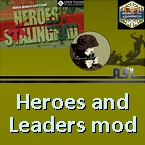Despite the attention given to tank and mechanized warfare in WWII, all nations but Britain and the U.S. relied primarily on horse power for the bulk of their non-rail overland transport.
Horse-Drawn transport (hereafter referred to as a Wagon) is considered vehicular in nature.
A wagon counter is always identified by its obvious overhead depiction.
References to MP expenditures/requirements apply equally to the MP of horse-drawn transport unless specified otherwise.
A wagon provides transport services in the same manner as a truck.
A wagon is an unarmoured vehicle target and is treated as such when attacked.
(Dis)mounting a wagon counter costs for the infantry the same MFs as it does for a truck.
A wagon unit is formed by an undetermined number of Horse-Drawn vehicles capable of carry 1 squad (or its equivalent), 2 SW (support weapon), and 2 SMC (single unit counter, such as medic, leader, or scout).
A wagon unit is considered as if it were a “road” vehicle, and has all its characteristics. Its movement capacity is 6R MP.
Although the vulnerability of wagons is higher than that of trucks, and much greater than that of halftracks, however, this fact is not taken into account here, considering that their size of target, noticeably lower, compensates in a certain way , this handicap.
The wagon unit also has an inherent crew, as in the case of vehicles. Its inherent crew are the soldiers who accompany and guard of the wagons.


















